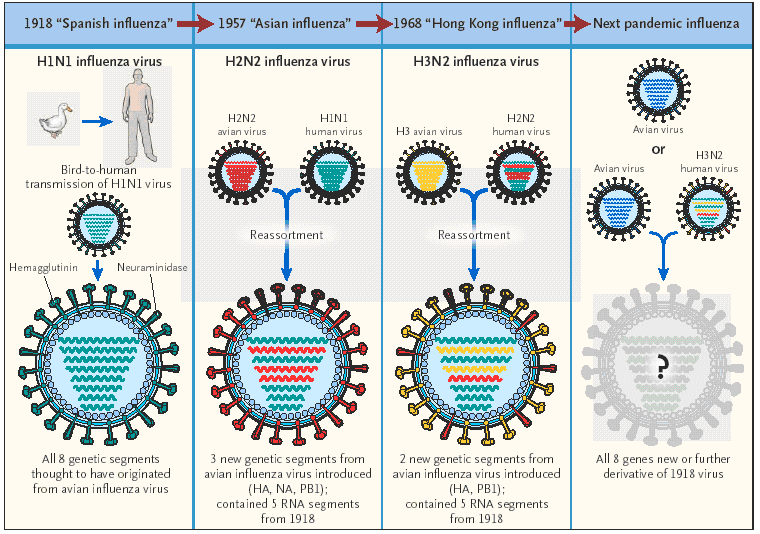| Index |
|
Avian
Influenza
|
|
|
|
Chapter 1 Introduction 1.1 Introduction The natural reservoirs of influenza A viruses are the aquatic birds which are generally in evolutionary stasis with these viruses (Lipatov et al., 2004). However, occasionally, the influenza viruses are transmitted to other hosts, such as terrestrial birds or mammals. This can cause transitory infections or, less frequently, cause continual infections in the new hosts with permanent lineages (Lipatov et al., 2004). The fear is that the latter will happen in humans, creating a pandemic. In the twentieth century there have been three pandemics of influenza
origin. The first, the 1918-19 H1N1 'Spanish influenza' was the
most devastating, causing about 20 million human deaths which was
about 1% of the world's population (Kobasa et al., 2004; Mackenzie,
2006). Worryingly, the hallmarks of this virus were lung infection
and induction of high levels of macrophage-derived chemokines and
cytokines (Kobasa et al., 2004), which are the patterns of pathogenesis
found in the current H5N1 (Cheung et al., 2002). It is thought that
this H1N1 virus originated form an avian virus (Figure 1.1). The
next two pandemics, the H2N2 'Asian influenza' in 1957 and the H3N2
'Hong Kong' influenza in 1968, were both reassortments of avian
and human viruses (Figure 1.1) (Belshe, 2005). However, this is
not necessary for a pandemic, as Taubenberger et al. (2005) discovered,
when investigating the 1918 pandemic.
The development of the H5N1 virus since its initial outbreaks in Hong Kong will be explored. The effects of the virus on its natural reservoir, the warfare between H5N1 and the host's immune system and the implications and strategies for both humans and animals will be discussed. Unfortunately it will be evident by the end that no one really knows what to predict or when to predict it even with the wealth of scientific information at our fingertips. Vaccine development or antiviral prophylaxis or treatment, as discussed in Chapter 7, may not be enough leaving billions of humans and animals vulnerable to the disease. |
|
|
